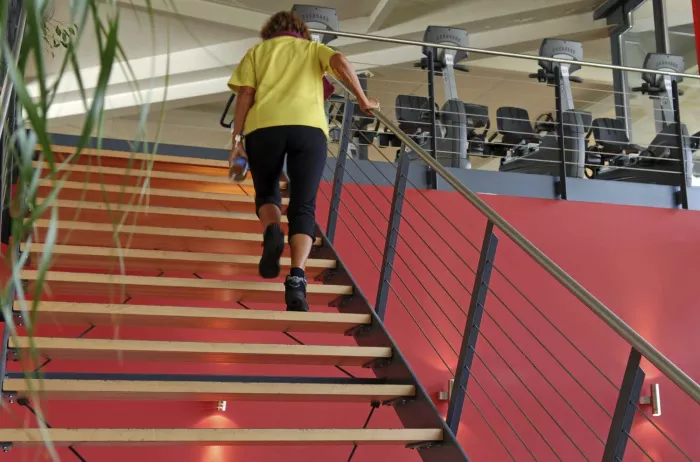Injuries can disrupt not only your workouts but also your daily life. Whether it’s a sprained ankle, a torn ligament, or chronic back pain, getting hurt is frustrating and often painful. But the way you recover can make all the difference. That’s where rehabilitation training comes in. It’s not just about healing—it’s about restoring strength, mobility, balance, and confidence. Proper rehab is the bridge between injury and full recovery, and without it, the chances of re-injury or long-term dysfunction are much higher.
Many people make the mistake of either doing too little or too much after an injury. Some rest too long, which leads to stiffness and weakness. Others jump back into activity too soon, only to end up hurt again. Rehabilitation training provides a structured, progressive approach that adapts to your body’s needs. It blends medical knowledge with movement science to help you heal faster, move better, and regain control over your body.
What Exactly Is Rehabilitation Training?
Rehabilitation training is a form of targeted physical activity designed to restore function after injury, surgery, or illness. It includes exercises that improve strength, flexibility, coordination, and endurance, all while respecting your body’s healing process. Rehab is not a one-size-fits-all approach. It must be personalized based on the type of injury, severity, age, fitness level, and goals of the individual.
This training goes beyond basic rest and recovery. It focuses on retraining the muscles, joints, and nervous system to work in harmony again. If you’ve ever had a torn ACL, a dislocated shoulder, or even repetitive stress injuries like tennis elbow, you know how much physical function is lost. Rehab doesn’t just rebuild muscle—it restores movement patterns and re-establishes balance across the body. It’s a dynamic, often slow process, but one that is essential for returning to activity safely and effectively.
The Stages of Effective Rehabilitation
A well-designed rehabilitation program typically moves through several key stages. The first phase is acute care—this is when pain, swelling, and inflammation are managed. During this time, rest, ice, compression, and elevation are common tools. But that doesn’t mean doing nothing. Gentle mobility exercises and isometric holds are often introduced early to prevent stiffness and maintain circulation.
As symptoms improve, the second phase focuses on regaining range of motion and flexibility. This helps the injured area move more freely and prepares the body for more demanding work. The third phase involves building back strength and stability. Here, more resistance is introduced, and movements become more complex. The final phase is functional training, where exercises mimic real-life or sport-specific actions. This prepares you to return to daily activities, sports, or the gym with confidence and without pain.
Common Mistakes That Slow Down Recovery
One of the most damaging mistakes during rehab is returning to normal activity too soon. Just because the pain is gone doesn’t mean the injury has fully healed. Pain is only one part of the equation. Without rebuilding strength, restoring mobility, and improving neuromuscular control, the risk of a re-injury remains high. Many athletes re-tear ligaments or strain the same muscle because they skipped the final stages of rehab.
Another common issue is doing the wrong exercises—or doing the right ones incorrectly. Rehabilitation isn’t about pushing through discomfort or lifting heavy weights. It’s about precision, control, and gradual progression. Skipping steps or rushing through phases can cause setbacks. That’s why working with a physical therapist or certified trainer is so important. They can assess your movement, adjust your plan, and help you progress at the right pace.
The Role of Mobility and Flexibility
Restoring mobility is one of the most important goals in rehabilitation. Injuries often cause joints and muscles to tighten. Scar tissue, inflammation, and inactivity all reduce range of motion. Without adequate mobility, your body compensates by moving poorly, which creates new problems elsewhere. For example, a stiff ankle can affect your knee, hip, and lower back alignment during walking or running.
Flexibility exercises, joint mobilizations, and soft tissue work like foam rolling all support this process. Slow, controlled stretching helps break down adhesions and restore length to shortened muscles. Yoga-inspired movements and mobility drills are often used in rehab settings to improve balance and control. As mobility improves, so does your ability to move efficiently, which reduces stress on the injured area and protects against future issues.
Strength Training in Rehabilitation
Strength training is critical in the rehab process, but it looks different than traditional gym workouts. It starts with very light resistance and controlled movement. The focus is not on how much weight you can lift but how well you can perform the movement without pain or compensation. Often, rehab begins with bodyweight exercises like glute bridges, single-leg stands, or scapular retractions.
As your tissues heal and your control improves, resistance is added gradually. Bands, cables, dumbbells, and even water-based resistance can be used. Eccentric training—where muscles lengthen under tension—is particularly helpful for tendon injuries. Building strength in a full range of motion not only restores function but also builds resilience. This prevents other areas from becoming weak or overloaded as you recover.
The Importance of Balance and Coordination
Injury doesn’t just weaken your muscles—it also disrupts your balance and coordination. When you’re hurt, your brain changes the way you move to protect the injured area. This can create inefficient movement patterns that linger even after the pain is gone. That’s why rehabilitation includes exercises to retrain your nervous system and improve body awareness.
Simple drills like standing on one leg, walking heel-to-toe, or catching a ball while balancing on an unstable surface help restore coordination. These exercises improve your ability to react quickly, stay stable, and move confidently. For athletes, this is especially important. Good coordination helps you cut, pivot, jump, and land safely. For everyone else, it reduces the risk of falls, sprains, and other daily injuries.
How Mental Health Affects Physical Recovery
Rehabilitation isn’t just a physical process—it’s a mental one too. Injuries often lead to frustration, anxiety, and even depression. You might feel impatient, scared to move, or worried you’ll never return to your previous level of function. These emotions can interfere with motivation and slow down progress. That’s why the mental side of rehab deserves just as much attention.
Building a positive mindset can make rehab more effective. Celebrating small wins, staying consistent, and working with supportive professionals can help you stay focused. Visualization, mindfulness, and deep breathing techniques can also reduce pain and improve movement. The more you trust the process, the more likely you are to recover fully and confidently return to the activities you love.
When and How to Return to Activity
Knowing when to return to sport or exercise is one of the biggest challenges in rehab. There’s often pressure to get back quickly, especially for competitive athletes or busy professionals. But returning too soon—without completing the full rehab process—can cause more harm than good. Even if the pain is gone, if you haven’t rebuilt strength, mobility, and control, you’re still at risk.
The best way to determine readiness is through testing and assessment. Functional movement screens, balance tests, and strength comparisons between limbs can reveal whether your body is ready. If one leg is significantly weaker or less stable than the other, more work is needed. The return to activity should be gradual. Start with low-impact, controlled movements before progressing to more intense or explosive actions. A smooth transition reduces the risk of setbacks and ensures long-term success.
Why a Holistic Approach Works Best
Rehabilitation is most effective when it addresses the whole body, not just the injured part. Often, the root cause of an injury lies elsewhere. For example, knee pain may be related to weak hips or flat feet. Shoulder issues might stem from tight lats or poor posture. A holistic approach looks at the entire kinetic chain—the interconnected system of muscles and joints—to find and fix imbalances.
This is why rehab often includes core strengthening, postural corrections, and even breathing techniques. Proper breathing improves core engagement and spinal stability, which supports every movement you make. Your entire body must work as a team to move safely and efficiently. A well-rounded rehab program doesn’t just heal the injury—it improves the way you move, feel, and live every day.
Conclusion
Rehabilitation training is not about taking shortcuts or getting quick fixes. It’s about giving your body the tools, time, and support it needs to rebuild after injury. Whether you’re recovering from surgery, managing chronic pain, or bouncing back from a sprain, the rehab process offers a safe and structured path forward. It teaches you how to move smarter, not just harder.
When done right, rehabilitation doesn’t just restore what was lost—it can actually make you better than before. You become stronger, more flexible, more balanced, and more aware of your body. You reduce the chances of future injury and gain confidence in your movement. So don’t rush your recovery. Trust the process. With the right plan, patience, and effort, rehabilitation training can transform setbacks into powerful comebacks.
Related Topics



































